Can Humans and Koalas Coexist?
Koalas are threatened by climate change, cars, and chlamydia. Can Australia find a way to protect its most beloved animal?

Photographs by James Bugg
Ten-month-old Emerson fixed his big brown eyes on me and yawned. Still groggy from a nap, the koala rubbed his face, then stuck out an expectant paw. The nurse escorting me through his enclosure smiled. “He’s looking for his milk,” she said.
Four months earlier, when Emerson was admitted to Northern Rivers Koala Hospital, in New South Wales, Australia, he was so small that volunteers had to feed him with a syringe, dribbling formula into his mouth, his furry body swaddled in a towel. Now healthy and about five pounds, he was one of the most effortlessly anthropomorphized animals I had ever come across. With his big nose and round-bodied floofiness, his shuffling movements, his droopy eyelids and eagerness to cuddle, he seemed like nature’s ultimate cross between a teddy bear, a bumbling grandpa, and a sleepy toddler.
“The first thing I tell my volunteers when they come here to start is: ‘You will not be cuddling these koalas,’ ” Jen Ridolfi, the volunteer coordinator for Friends of the Koala, the nonprofit that runs Northern Rivers, told me. But sometimes even the most stoic get attached. Many koalas spend months here; volunteers call them “dear,” “sweetie,” and “love.” I watched one volunteer lean down to coo at a male named Gigachad. “I just want to kiss his nose,” she said, before quickly assuring me that she wouldn’t. Even FOK’s veterinary staff will occasionally pat the backs of koalas during routine checkups or slip a hand into the paw of an animal under anesthesia.
Ridolfi is vigilant about volunteers for a reason. Of the roughly 350 koalas admitted annually to Northern Rivers, only about a third survive. Chief among the threats they face is chlamydia—yes, that chlamydia—a bacterial infection that in koalas, as in humans, spreads primarily via sex, and can cause blindness, infertility, and other severe, sometimes fatal complications. Car collisions and dog attacks are not far behind. Koalas are also vulnerable to cancers, fungal infections, herpes, parasites, kidney problems, mange, and a retrovirus that might leave them immunocompromised.
These acute perils are compounded by more chronic ones: habitat destruction; genetic fragility; and climate change, which fuels heat waves, droughts, and wildfires that scorch the trees that koalas live in and eat from. “The biology of the species has been hammered by humans,” Edward Narayan, a biologist at the University of Queensland, told me. Some koala populations have, in recent decades, fallen by 80 percent. In 2022, Australia’s federal government declared the animals endangered in Queensland, New South Wales, and the Australian Capital Territory, essentially the eastern third of the country.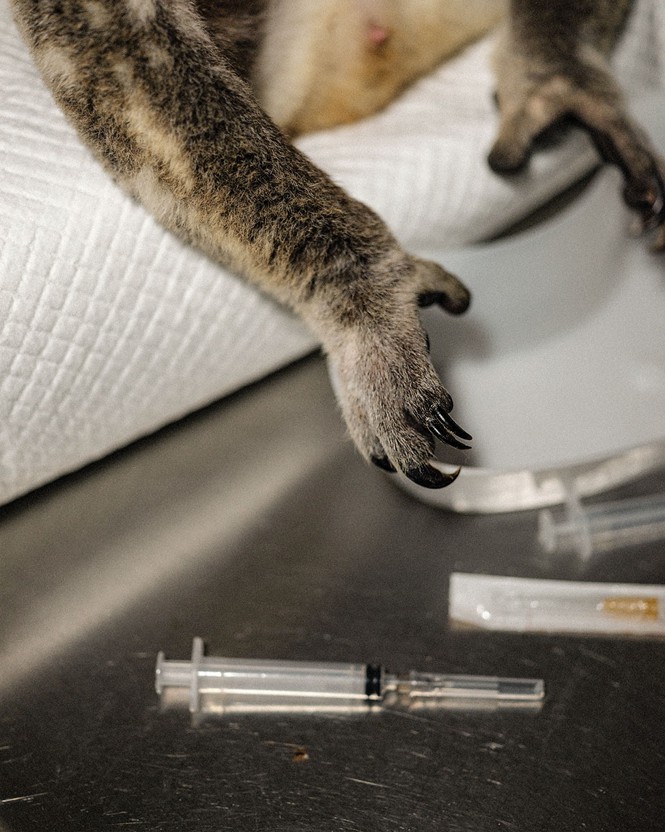
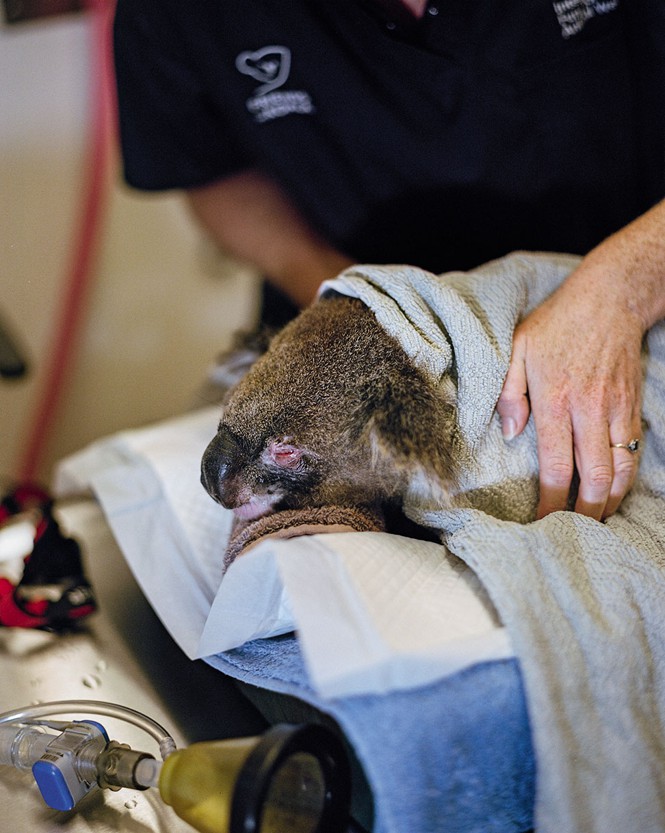
Koalas are far from Australia’s most endangered animal—they’re not even its most endangered marsupial. (Pity the Gilbert’s potoroo, a rat-kangaroo the size of a guinea pig, and the very rare and very whiskered northern hairy-nosed wombat.) But if there’s any creature that people are motivated to save, it’s the koala. Since 2019, the Australian government has dedicated the equivalent of about 50 million U.S. dollars to conserving the species, far more than it has allocated to animals in greater peril. Koalas are a national icon and, like many other charismatic megafauna, a boon for tourism. Plus people just seem to connect with them in a way they do with few other animals.
But the places where koalas prefer to live—lush, coastal regions—are also the places that human beings find most hospitable. Which means that even an animal this beloved may test the limits of what people are willing to sacrifice to save another species.
Maria Matthes can spot koalas in trees even while driving 50 miles an hour down roads riddled with potholes. “Did you see them?” she asked me. “There were at least five koalas, just down that stretch.” (I had seen zero.) Matthes, an ecologist who works with Friends of the Koala, grew up naming the koalas that loafed around in her backyard. Now she spends her time surveying wild koalas. When she spots a sick one, she sets out to trap it.
The day we met, Matthes was attempting, for the third time, to snare Dumpling, a koala that had been lurking for weeks on the property of her friends Jo Walton and Peter Boucher. Dumpling was clearly not well. She looked frail. The fur on her rump was wet and stained reddish brown—an indication that she suffered from an inflammatory condition called cystitis. Matthes had seen these signs before: Dumpling had chlamydia, and she’d had it for a while. In all likelihood, Matthes said, the bacterial pathogen had spread to her reproductive tract, lining it with cysts that can be as big as oranges. At this stage of the disease, Dumpling was likely dehydrated and in serious pain, struggling to move or even eat.
Sexually transmitted infections have never been just a human problem: Dolphins have genital herpes; pigs exchange brucellosis; rabbits, notoriously promiscuous, get syphilis. For the most part, STIs are not hastening the decline of entire species. But for koalas, chlamydia is a scourge. They lack immunity to the pathogen, which some researchers suspect was introduced to koalas by imported livestock in the 18th century. Retroviral infections, too, may be speeding the spread of the deadly disease.
At FOK, the majority of koalas admitted with chlamydia must be euthanized shortly after they arrive. Among those that receive treatment, fewer than half survive: The drugs that kill the pathogen can also destroy koalas’ fragile gut microbes.
The threat of chlamydia is also growing as the disease seeps into just about every corner of the species’ northern range. In 2008, scientists tracking one population around the town of Gunnedah, New South Wales, which calls itself the “koala capital of the world,” found chlamydia in less than 10 percent of the koalas they tested. Now the disease is thought to be present in nearly every koala there; within just a few years, researchers expect Gunnedah’s population to entirely disappear.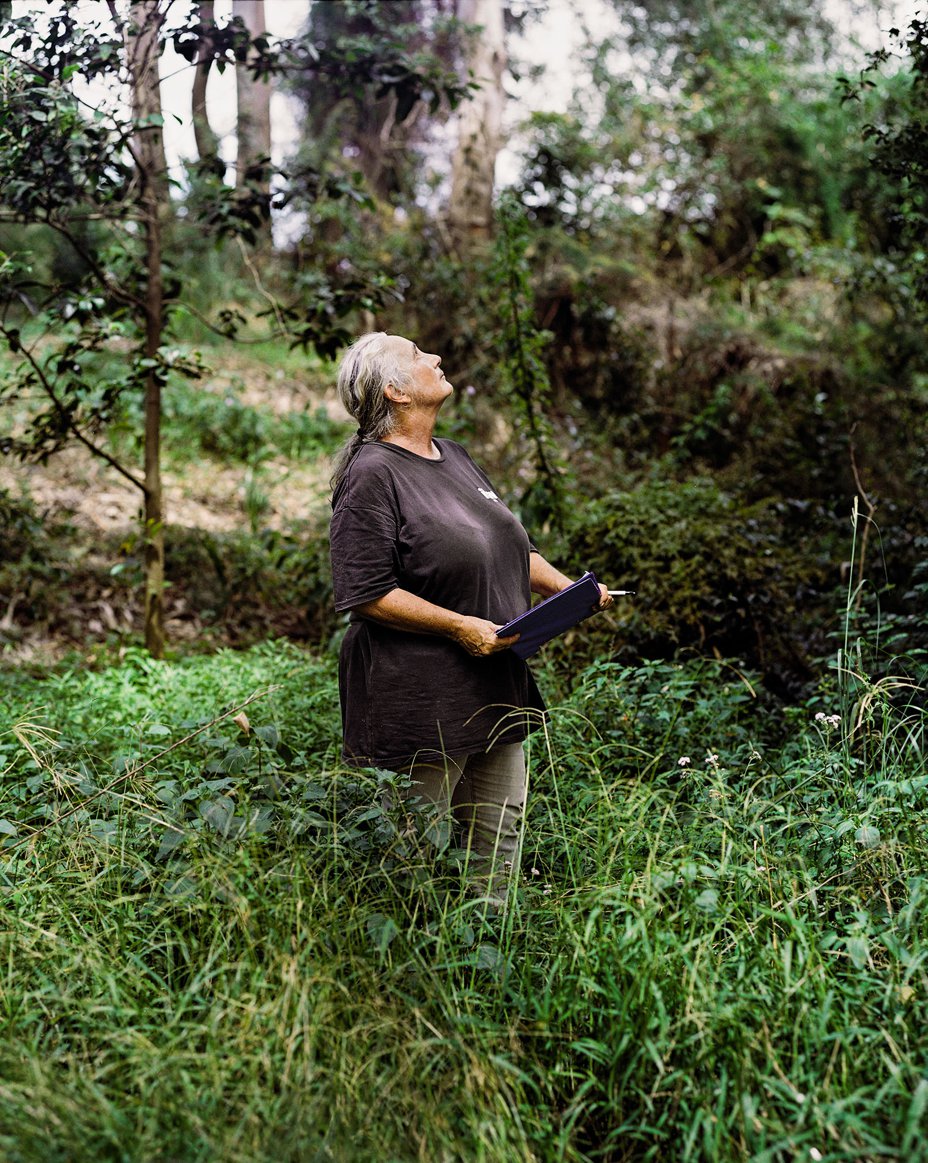
Peter Timms, a microbiologist at the University of the Sunshine Coast, and his colleagues have been developing a chlamydia vaccine that’s now being administered to small numbers of koalas in Queensland and New South Wales on a trial basis. It can’t prevent infection, but it does seem to curb the disease’s severity. Vaccinating a fifth of one koala population, Timms said, appears to have improved survival by at least 60 percent.
[Read: We vaccinate animals more than ourselves]
The vaccine is still in limited supply, though. Northern Rivers Koala Hospital receives just 100 doses a year; when I visited in March, the facility had only 10 left for the next four months. Jodie Wakeman, a veterinarian at FOK, saves the shots for young, healthy animals, which likely have many reproductive years ahead. I watched Wakeman administer doses 91 and 92 to two male joeys—Droplet, who was recovering after falling from a tree, and Kelso, who came in with a mild-enough case of chlamydia that it left no lingering damage, and was now disease-free. In late April, Emerson received one too.
But vaccines can’t help animals that have already been infected for months or years—which ended up being the case for Dumpling, who finally crawled down into her trap about a day and a half after Matthes set it. An exam at Northern Rivers confirmed what Matthes had guessed: a bladder burning with cystitis, and a reproductive tract so full of cysts that it was no longer functional. A veterinarian euthanized Dumpling and later handed the body back over to Matthes, at her request.
Dumpling’s death shook Jo Walton, who had named the koala and taken dozens of photos of her. Matthes, Boucher, and Walton buried Dumpling, arms crossed over her little chest, in Boucher and Walton’s garden, murmuring their regrets about not finding her earlier.
On her own property, Matthes estimates that she has buried about 30 koalas over the past two decades, a practice she started after finding one too many dead koalas on the roads near her home. Sending them to the landfill “doesn’t feel right,” she said, “especially when they are a koala I know.” She is particularly tender with the ones that were killed by dogs or cars. “I am sorry humans are so careless,” she tells them, before lowering their bodies into the dirt.
Millions of koalas are thought to have lived in Australia before Europeans colonized the continent in earnest. Starting in the 19th century, though, eager to meet demand for koala pelts from clothing makers abroad, settlers hunted so many of the marsupials that they were eventually driven to near extinction, particularly in the south. By the 1930s, the koala-fur trade had been halted, but already, koalas were running up against another human desire: land. Today the country’s koalas number only in the hundreds of thousands, by most estimates; some argue that the real count is even lower. And as Australia’s human population continues to grow, protecting the animals exclusively by setting aside new, people-free habitats for them becomes more difficult. “It’s naive to think that that’s ever going to happen,” Deborah Tabart, the chair of the Australian Koala Foundation, told me.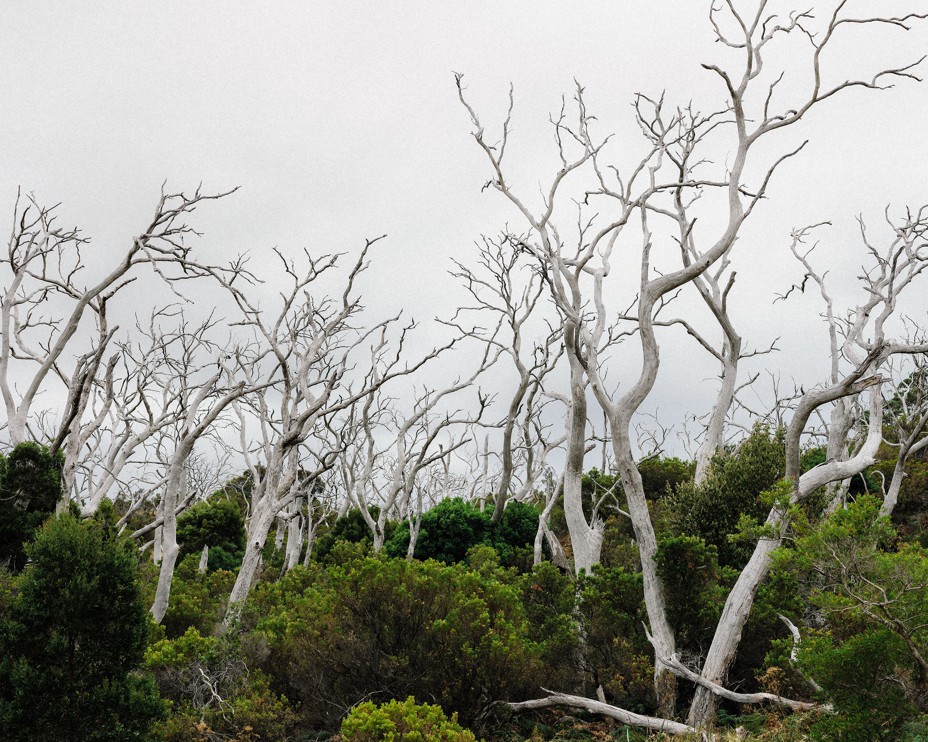
About 30 years ago, Tabart and her colleagues were mapping prime koala habitat, and they could see how little was left. Particularly in the northern part of the species’ range, the animals were being squeezed between new highways and housing developments to the east and agricultural fields to the west. But one choice area in New South Wales overlapped with a nearly 900-acre tract of land owned by a developer Tabart knew, and she successfully talked him into creating the country’s first koala-friendly subdivision, called Koala Beach. Homes would be built only on land that had already been cleared—about a quarter of the area, room for 500 houses—and residents would have to abide by a variety of rules meant to foster coexistence with koalas and some two dozen other rare or endangered species. The plan, Tabart said, was to “squeeze the humans in, and let the animals have the bush.” She hoped it could be a model that other developers would follow.
Before I visited Koala Beach, I imagined an overgrown, semitropical utopia that would illustrate the extreme measures required for us to live alongside these fragile marsupials. When I arrived, though, I was struck by how much the neighborhood looked like a typical suburb. The speed limits were lower here, yes, and block letters painted prominently on Koala Beach’s roads warned NO CATS no DOGS, but there were still plenty of cars. The koala-friendly measures were subtle: On the sidewalk outside many of the houses, I saw a species of gum tree that koalas are known to eat, and several streets terminated in a miles-long tangle of uninterrupted forest. (Each household in Koala Beach is required to pay the equivalent of about 140 U.S. dollars a year to help maintain the wild land.) I spotted several koala-themed mailboxes, but never, to my disappointment, any actual koalas. They were around, though: Irene Timmins, who moved to Koala Beach nine years ago, told me that residents reported sightings “quite frequently now,” at least by endangered-animal standards. “Maybe once every couple of weeks.”
In the 1990s, when just a few dozen nature-loving residents lived in the development, Koala Beachers were generally happy to forgo cats and dogs as pets, and to build fences with at least a foot of clearance off the ground, so a koala could pass through. Now essentially all of the 500 homes in the estate are occupied—some by buyers who were more attracted to the new houses and coastal location than to Koala Beach’s commitment to biodiversity. It’s become common, Timmins said, to see cars speeding down the streets, and about half the fences have been built or retrofitted to sit flush against the ground. At least a few people have snuck pet dogs into the estate, Timmins said, one of which she thinks may be owned by some of her neighbors. They deny it, she said. “But I’ve got the picture.”
[Read: Australia will lose to climate change]
Koala Beach never took off as a model for sustainable development; according to Tabart, it is still Australia’s only designated koala-friendly subdivision. How much it has actually helped its namesake animal is also unclear. No one I spoke with was able to tell me, for instance, how many koalas live there—let alone whether their numbers have increased since the koala-friendly regulations went into effect. “I have lost faith in Koala Beach,” Tabart said. The development itself will probably still be around in another 30 years. “Whether the koalas are there,” she said, “I don’t think so.”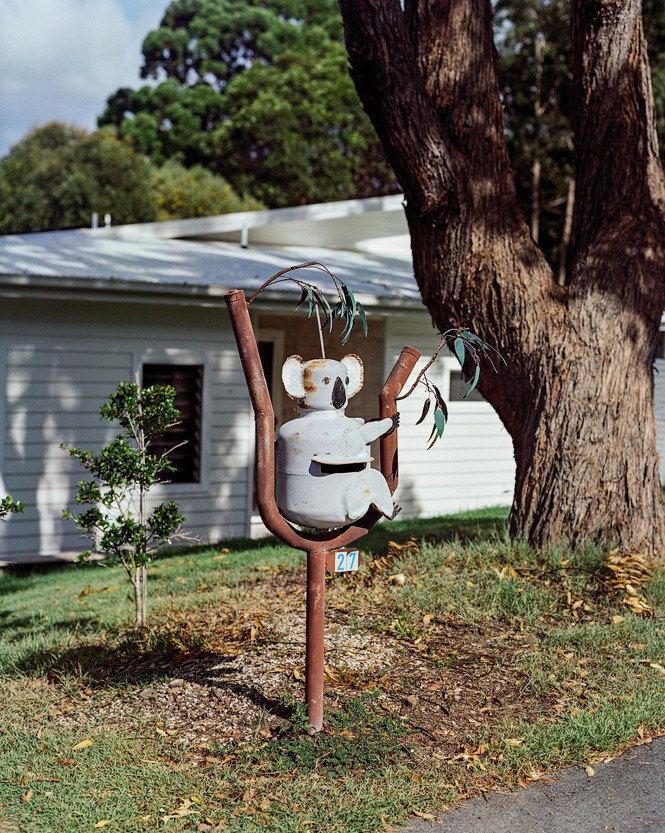
Government conservation plans have set aside swaths of protected koala habitat, but many of the experts I spoke with said that the land isn’t nearly enough. Koala Beach was meant to be the compromise—a tacit acknowledgment that humans wouldn’t cede all of the untouched forest necessary for koalas to live apart from us. But humans made their priorities clear: People do love koalas. They also love cars and dogs.
In other parts of Australia, koalas face a threat that’s almost unimaginable in Koala Beach: overpopulation. French Island, about a 15-minute ferry ride from Stony Point, in the southern Australian state of Victoria, is home to about 140 humans and, by residents’ best estimates, at least 35 times as many koalas. Veronica Shannon, who has lived on French for the past three years, sees dozens most weeks, several of them in the grove of trees a few hundred feet from her front door. In late February, she sent me a photo of a hulking male perched on her deck that a few days earlier had startled her awake when he rapped his claws on her bedroom window.
French is one of the country’s most koala-rich tracts. The animals were introduced to the island in the 1890s by locals, in an attempt to halt population declines during the still-rampant fur trade. Safe from foxes and other mainland predators, the island’s koalas became so numerous that conservationists eventually began using them to repopulate other areas in the country’s south. Down there, koalas haven’t had to contend with the same sweep of urbanization that has reshaped the continent’s east coast; they seem to be less troubled by both chlamydia and retrovirus. Overall, the region’s koala population is large and stable enough that, were koala declines to be averaged across the entire country, any official listings for endangerment would probably disappear.
Some locals on French, including Shannon, delight in the koalas that traipse across their property and slosh through the surf near the ferry dock. Southern koalas look different from northern ones: They’re browner, fluffier, and weigh about twice as much. And unlike the wary animals to the north, French’s koalas don’t seem to mind humans. A co-owner of the island’s Eco Inn, Phil Bock, showed me an adult male koala that was dozing at eye level in a stumpy tree, barely fidgeting even when Bock cooed at him from inches away.
Other residents, though, see the koalas as a nuisance. During the animals’ mating season, in the spring and summer, many evenings ring with males’ piglike grunts and growls, followed by females’ wailing shrieks. And it’s nearly impossible to sate the appetites of thousands of animals that can each grind through more than a pound of eucalyptus leaves a day. Noel Thompson, a local farmer whose family has been on French Island for 130 years, drove me to a small grove of trees he had planted on his ranch and counted off the half a dozen or so that, thanks to the “bears,” no longer had leaves, and never would again: “Dead, dead, dead, dead, dead, dead.” Thompson’s cousin Lois Airs told me she had dedicated years to planting and caring for French’s trees, many of which koalas then stripped bare. She likes koalas, she said, but French long ago surpassed its threshold for too many.
That sentiment is also common in Cape Otway, Victoria, a forested triangle of coastline where a small cohort of French Island koalas was reintroduced in the 1980s—and quickly boomed, gnawing its way through the region’s manna gum trees. The streets here were once shaded by a magnificent canopy, thick enough that it was difficult to see through. Now entire stretches of road are lined with dead trees, their trunks twisted and dry, their bark a ghostly white. Where birds and frogs and rodents once chirped and croaked and chittered, the forest is silent, save for the sounds of passing cars. Visitors regularly ask what fire or disease killed the trees.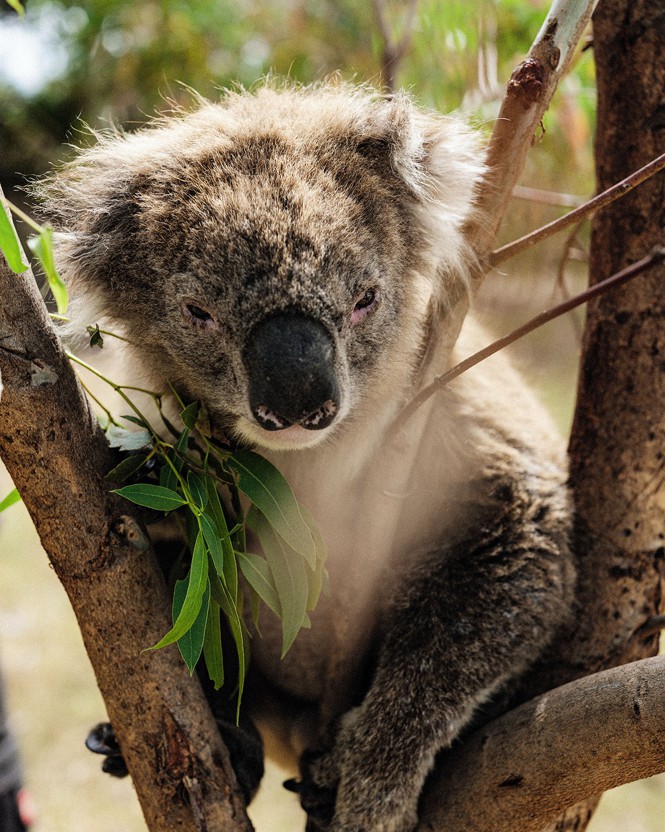
Researchers can’t say for certain why the koalas so stubbornly stuck to Cape Otway’s trees. But by 2013, scientists were documenting parts of the area with koala densities 20 times higher than what’s been observed in healthy populations elsewhere; people began to snap photos of a dozen koalas crammed into a single tree. Maybe the animals preferred the local leaves, or couldn’t stomach other ones; maybe they had no options for a better habitat. They might have even inherited some behavioral quirk from generations of inbreeding. Whatever the reasons, even as the branches grew barren, the koalas refused to vacate.
[Read: When conservationists kill lots (and lots) of animals]
Desley Whisson, who studies koala overabundance at Deakin University, in Victoria, recalls that emaciated koalas ended up crawling around at the base of trees, gnawing on bark and chewing on grass just to try to fill their bellies. Eventually, the state dispatched a team of veterinarians to euthanize dying koalas—some 1,400, according to the official tally. Other animals simply starved. Frank Fotinas, who co-owns a local campground called Bimbi Park, told me that the whole region “stunk of death for months and months.”
To control overly abundant populations, officials have moved koalas to new homes, given them contraceptive implants, and, as needed, euthanized sick animals. But both in Cape Otway and on French Island, locals think current efforts are failing to keep the numbers in check. Airs would add a more efficient option—a regular cull. “Thank you,” Thompson said. “Absolutely.”
Still, Airs and Thompson are acutely aware that any mention of culling koalas tends to spark backlash. Government officials cull wallabies and kangaroos as a matter of course. But koalas are still treated as more sacred, and killing a healthy one hasn’t been legal in Australia for nearly a century.
In an optimistic future, southern koalas could repopulate the species’ northern range, just as French Island koalas helped repopulate the south—a possibility that some researchers are already planning for. But shifting koalas around isn’t as simple as it sounds. Even translocating koalas within a forest can be harmful to an animal, because their gut bacteria are so sensitive to dietary changes; cross-country migrations may simply not be possible. And scientists remain unsure why Australia’s northern and southern koalas are so different. If genetics is part of the reason southern koalas have fewer problems with chlamydia, for instance, then those animals might be able to help their northern relatives. But the disparities could also be explained by quirks of the environment, different strains of the bacterium or the immunocompromising retrovirus, or chance. Mingling north and south might speed chlamydia’s spread, or even import southern diseases north, accelerating the timeline on which the entire species vanishes.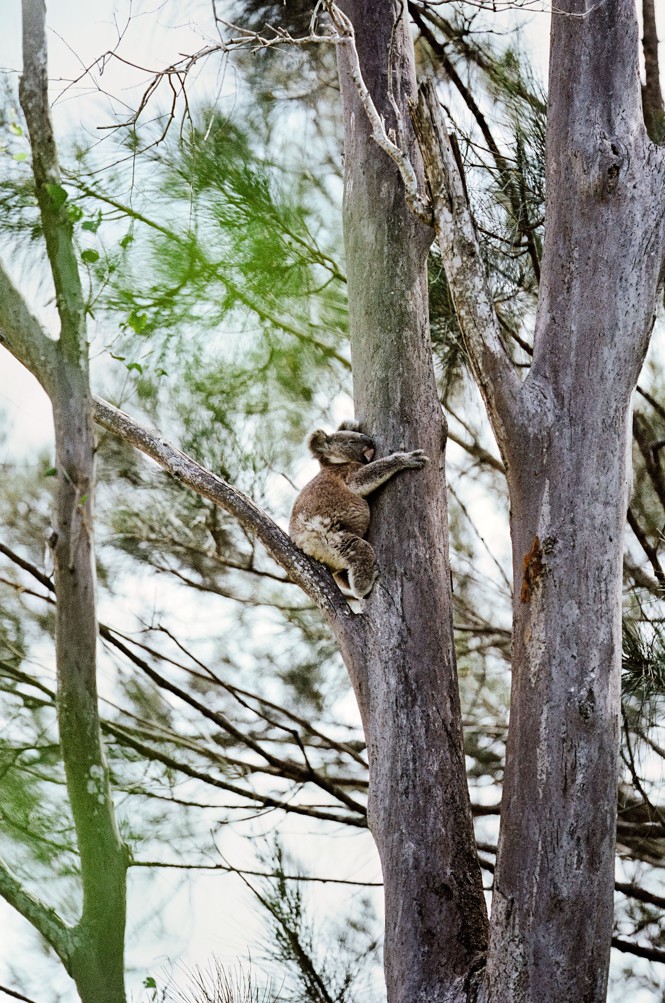
The idea of southern koalas repopulating the continent assumes, too, that those koala populations are healthy and stable. But “the story that koalas are ‘not endangered’ down south … is absolute rubbish,” Flavia Santamaria, a koala researcher at Central Queensland University, told me. The entire region has only a handful of truly ultradense populations. Most other koala communities in southern Australia remain in decline.
[Read: The bleak future of Australian wildlife]
Across the country, climate change is only further challenging koala survival. Pilliga, a vast stretch of forest in New South Wales, was once a haven for thousands of koalas, enough that researchers considered it a kind of emergency reservoir. Now, thanks to a rash of fires and droughts, the koalas appear to be all but gone, probably for good. Farther south and west, extreme temperature spikes are taking their toll: During a brutal heat wave in March, I visited the Adelaide Koala & Wildlife Centre on a day when most of the koalas brought in were admitted with suspected heat stress. Locals have found the animals discombobulated and languishing at the base of trees, sometimes so desperate for water that they’ll crawl into backyards to sip whatever liquid they can from pools and dog bowls.
As northern populations continue their rapid decline, the south will account for even more of the world’s remaining koalas. But some people seem to think less of southern koalas: They’ve often been cast as inferior, less attractive versions of their counterparts to the north. Several experts have also dismissed the koala population in the south as being too inbred to serve as an insurance policy for the entire continent. Some southern koalas, for instance, have wonky jaws or testicular abnormalities. Perhaps attitudes will shift as the years wear on; southern koalas, after all, could someday be the last ones the world has left.
There will never be a single correct way to save koalas—not when the species’ problems are so diverse and humans cannot agree on what the animals most need, or even whether they are in need. Some people in the south treat koalas not as a species under threat of eventual extinction but as easily expendable “tree lice” or “tree pigs.” Earlier this year, a farmer in southwest Victoria was fined after he hired contractors to bulldoze his blue-gum plantation, injuring and killing dozens of koalas; recently, loggers allegedly cleared land on South Australia’s Kangaroo Island with koalas still in the trees. “I’ve seen people hit them with cars and not stop to check if they’re okay,” Kita Ashman, an ecologist at World Wide Fund for Nature in Australia, told me.
Emotions can cloud decisions in the other direction, too. Jen Ridolfi, the volunteer coordinator, and Jodie Wakeman, the veterinarian, said that at FOK, some rescuers still break down in tears every time they bring a sick or injured koala in. On occasion, people will even get combative with Wakeman, insisting that they know what’s best for “my baby.” I asked Wakeman if her job sometimes feels like that of a pediatrician, managing the emotions of parents. She laughed sadly. “Yes,” she said. “Sometimes it does.”
While in Adelaide, I watched the Koala & Wildlife Centre’s veterinary staff examine one very sick koala, a 12-year-old female named Amethyst, while she was under anesthesia. An abdominal scan revealed crystals in her kidneys—a telltale sign of severe renal disease; the vet treating her also suspected that she had chlamydia in her urogenital tract. After a few moments of silence, a member of the staff shuffled me toward the koala enclosures, where the next patients were being kept. Perhaps the team didn’t want me to watch them decide to euthanize Amethyst, or see the black body bag into which they’d load her corpse. But I learned of her fate soon enough: In the koala dormitory, I saw a volunteer slip in, walk to the whiteboard on the front of Amethyst’s cage, and erase her name.
This article appears in the July/August 2024 print edition with the headline “Too Cute to Fail.”
What's Your Reaction?




















